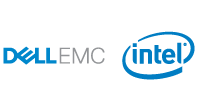The Supply Chains Innovator's Technology Footprint
sponsored by Infor
WHITE PAPER:
Pressure is increasing to better manage supply chains to improve customer service, lower product costs and increase business process efficiency. Read this paper to learn about best practices for improving an organization's supply chain proces...
Posted: 10 Nov 2006 | Published: 01 May 2006

|

|
|
VeriSign Mobile Enterprise Services: Enabling Next-Generation Mobile Messaging for Enterprises
sponsored by VeriSign, Inc
WHITE PAPER:
This Solution Paper provides an overview of the rapidly growing mobile messaging and alerts market, and introduces a solution that addresses that market: VeriSign Mobile Messaging, an offering of VeriSign Mobile Enterprise Services (VMES).
Posted: 05 Jun 2009 | Published: 02 Dec 2008

|

|
|
Five Technologies Simplifying Infrastructure Management
sponsored by Liebert Corporation
WHITE PAPER:
This paper describes five infrastructure technologies that are making it easier for growing businesses to introduce new IT systems as needed while maintaining high levels of availability.
Posted: 20 Feb 2008 | Published: 01 Jan 2007

|

|
|
Keeping It Simple: How to Protect Growing VMware Environments
sponsored by BakBone
WHITE PAPER:
VMware has evolved to meet the needs of its growing customer base and has built an excellent foundation for data protection. It's Designed to work in conjunction with third-party backup software applications.
Posted: 16 Jul 2008 | Published: 01 Jul 2008

|

|
|
Solution Guide - Choosing Storage for Dell Database Solutions with Dell™ PowerVault™ and Dell/EMC Storage
sponsored by DellEMC and Intel®
WHITE PAPER:
This white paper provides a guide for choosing an appropriate storage architecture for Dell Database Solutions deployed on Dell PowerEdge servers with Dell PowerVault and Dell/EMC storage.
Posted: 27 Aug 2008 | Published: 27 Aug 2008

|

|
|
Virtualization Overview
sponsored by Global Knowledge
WHITE PAPER:
This paper explains an approach to virtualization software that relies on the host operating system to provide the service to talk directly to the underlying hardware.
Posted: 10 Dec 2008 | Published: 11 Oct 2008

|

|
|
Best Practices for Windows Vista Planning, Migration, and Ongoing Management
sponsored by Symantec Corporation
WHITE PAPER:
It is vital to ensure PC system and data security during migration to Windows Vista. This white paper highlights considerations that must be addressed over the entire migration process.
Posted: 02 Jul 2007 | Published: 01 Jun 2007

|

|
|
Epicor ICE 2.0: Introducing Next-Generation Business Architecture
sponsored by Epicor Software Corporation
WHITE PAPER:
Epicor Internet Component Environment (ICE) 2.0 is a modern business architecture and application framework which utilizes a 100% service-oriented architecture (SOA) and Web 2.0 technologies for a new breed of enterprise solution.
Posted: 21 Nov 2008 | Published: 21 Nov 2008

|

|
|
Going Parallel with LabVIEW Delivers Throughput Gains
sponsored by National Instruments
WHITE PAPER:
In this whitepaper learn how by combining technologies with NI Lab VIEW parallel programming software and NI TestStand test management software, test engineers can create high-performance test systems.
Posted: 16 Sep 2008 | Published: 16 Sep 2008

|

|
|
Attachment Spam - The Latest Trend
sponsored by GFI Software
WHITE PAPER:
This white paper explains what makes spam such an unbearable problem and how spamming tactics are evolving daily to beat anti-spam software.
Posted: 18 Mar 2008 | Published: 01 Jan 2007

|

|